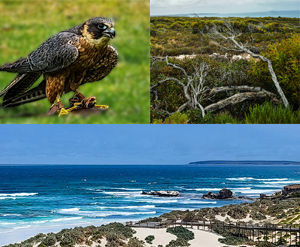‘Karta Pintingga’ … ‘Island of the Dead’ according to Kaurna people … commonly known as Kangaroo Island … Australia’s third largest island lies in South Australia. Spanning 4,405 km2 (1,701 sq mi) in area; 145 km (90.1 mi) in length; 90 km (56 mi) – 57 km (35 mi) in width; with 540 km (336 mi) coastline – is one of most visited places in Australia.
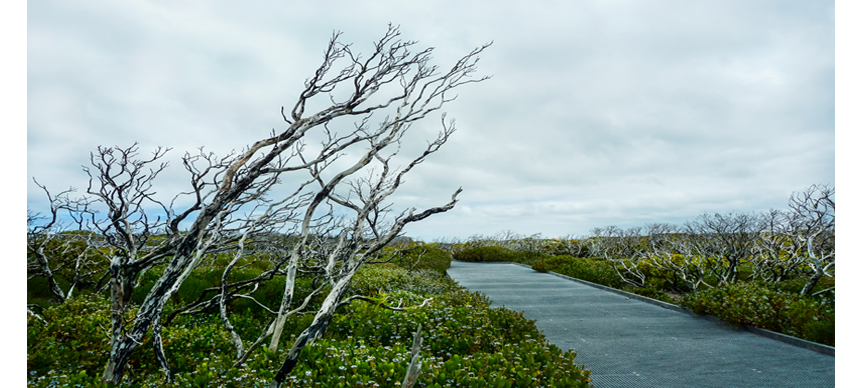
Where is it
Located about 112 km (70 mi) southwest of Adelaide; with Snapper Point being closest point to mainland Australia. The Kartan people, native aboriginals, disappeared sometime after rising sea levels associated with Last Glacial Period around 10,000 years ago.
Settled by sealers, whalers in early 19th century; primarily agricultural with southern rock lobster fishery and fast-growing tourist in recent years.
Agriculture
Grapes, honey, wool, meat and grain are main industries on island – sheep, cattle farming predominates; with some of best southern rock lobsters sourced from island’s rugged south coast.
Kangaroo Island has state’s only eucalyptus oil distillery – oil is distilled from endemic kangaroo Island narrow leaf mallee.
Do you know Island has over 30 wine growers and 12 wineries?
Yes, first vineyard was established in 1976; first wine made in 1982. This was blended with Tolleys Barossa wines, sold from cellar door of Eastern Cove Wine as KL-Barossa blend.
Bee Industry
Do you also know that Kangaroo Island is noted for its honey and Ligurian honey bees?
Yes, the Island has world’s only pure-bred and disease-free population of Ligurian honey bees.
Export of pure-bred queen bees is also a notable industry for the Island. Hence, significant quarantine restrictions on bringing related products and equipment to the Island.
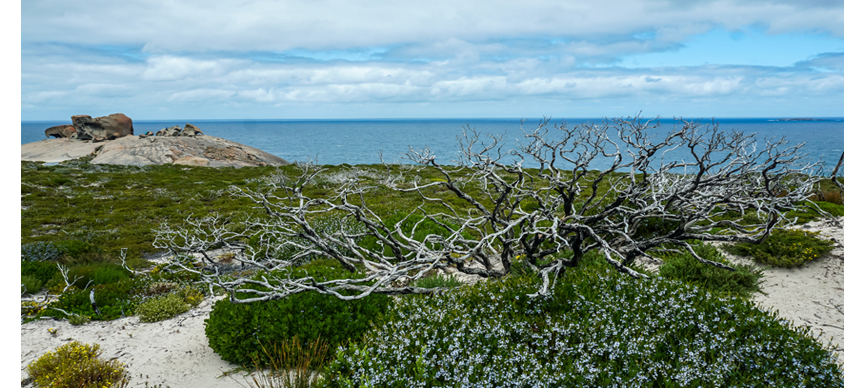
Landscape & Places of Interest
However, the most alluring aspect of Kangaroo Island is its magnificent natural landscapes.
Remarkable Rocks
Flinders Chase National Park is home to Remarkable Rocks – massive rock formations… eroded over time … in hues of rusty yellows … Walk around, under, in between rocks to appreciate what Nature has to offer.
Admiral’s Arch
Seen from afar … gently sloping towards rugged shores … home to colony of long-nosed fur seal colony … a sight to behold!
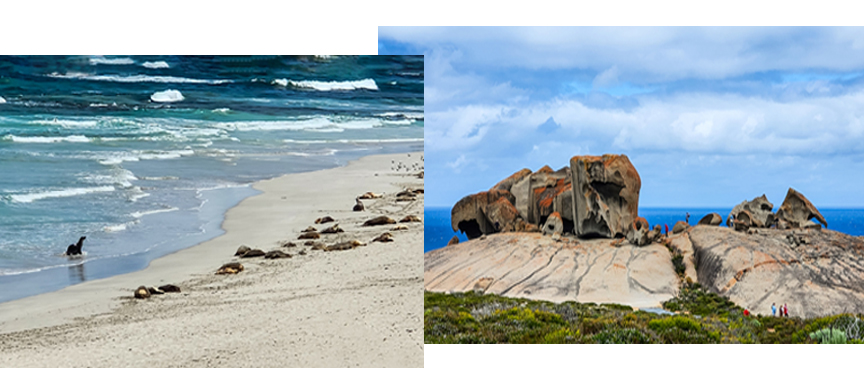
Seal Bay
A 900-metre (2953 feet) return boardwalk takes you down to limestone cliffs, and dunes to Seal Bay where Australian sea lions surf the waves or bask along shoreline beaches. If you are lucky, you can also see seal pups frolicking in the water under watchful eyes of mummy seal.
National Conservation Park Wilderness Protection
Due to its isolation from mainland Australia, there are no foxes or rabbits on the island. Hence, nearly half of the Island is of natural vegetation; quarter of it is conserved national park and wilderness protection areas.
Kangaroos, sand goanna, southern brown bandicoot, tammar wallaby, brushtail possums, short-beaked echidna, Australian sea lion, and long-nosed fur seal are natives to the Island … as well as bat and frog species. Sole endemic vertebrate species is a small marsupial carnivore – the Kangaroo Island dunnart.
Most are easily found wandering around brush and parklands, but the dunnart is a bit more elusive.
Bird life is abundant on the Island – fairy tern, brush stone-curlew, hooded plover, geese, and there are ducks – musk, blue-billed, freckled varieties are all found on the Island. Look up when visiting – you will see some of birdlife around !
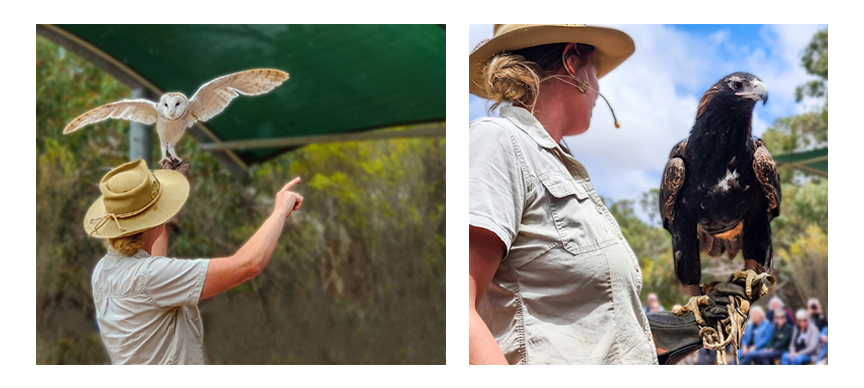
Wildlife Experience – Raptor Domain
Up close and personal … very personal with Barn Owls, Kookaburras, Wedge-tailed Eagles, Black Kites.
Raptor Domain is a centre for protection and conservation of birds, reptiles through rescue, rehabilitation, education and research.
Do you know that Raptor Domain rescued many orphaned, injured, and sick birds in the wild and become ambassadors to help create awareness and appreciation for their species and habitats?
Home to ‘free-flight’ birds of prey presentation – interactive experience – pat an owl, watch raptor take flight from your arm, chat with Cockatoos, laugh with Kookaburras – lots of fun for young and old!
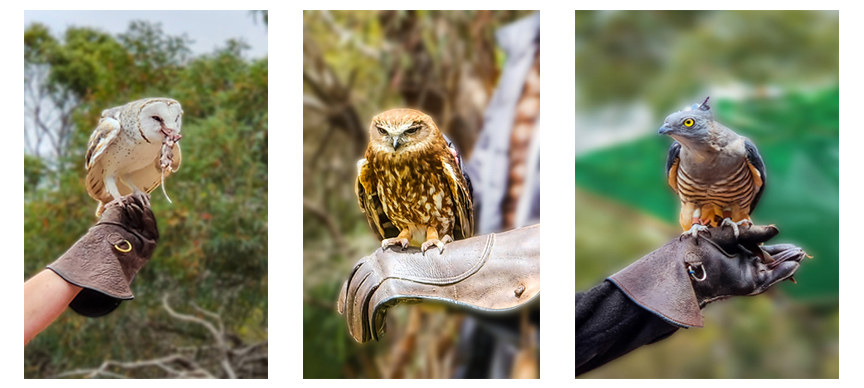
2020 Bushfires
Unforgettable January 2020 saw the devastation caused by bushfires in Kangaroo Island – 52 percent or 2,100 square kilometres (520,000 acres) of the island was affected. Towns were evacuated, bushfire emergency declared, two lives lost, 80% of koalas died in fires, some species were possibly endangered, facing extinction.
However, bushfires play an integral part in ecology of Australian landscape – many native plant species are adapted to survive, regenerate and thrive after fire – much of park is regaining and thriving, with local inhabitants being regularly spotted …
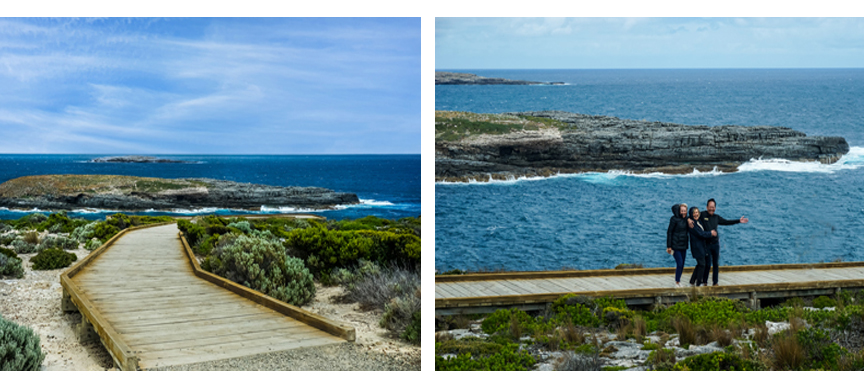
Conclusion
Island of nature reserve … wildlife galore – from unique to dangerous … up close with birds of prey … sample quality wines … take home delightful honey and honey products … indulge in spot of fishing …
There is something for everyone to see, do and experience at Kangaroo Island !
